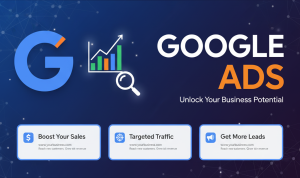

Affiliate digital marketing plays an important role in advertising today. It assists the brands in reaching more individuals and achieving definite outcomes via a performance-based strategy. The appropriate affiliate marketing firm is capable of increasing the online presence of a business. This results in higher sales and the return on investment (ROI). This is a guide on the fundamentals of affiliate marketing. It covers important digital channels, shows how AI can help, and gives tips for building a strong affiliate marketing strategy.
Affiliate marketing is a performance based model. Brands in this model collaborate with affiliates in order to market their products or services. The affiliates are given commissions in terms of their actions such as sales or leads in their promotions. The model is such that a business pays in accordance with actual results. This renders it an affordable and expandable marketing plan.
The affiliate marketing market is currently valued at approximately $18.5 billion all over the world. It is projected to hit $31.7 billion by the year 2031. This is equivalent to 8 percent a year growth rate.
Search Engine Optimization (SEO) and content marketing anchor affiliate marketing. Affiliates create valuable content, such as blog posts, reviews, and tutorials. These materials rank well on search engines and link to affiliate offers. This builds trust with the audience and leads to higher conversion rates.
Best Practices:
Difficulties: SEO takes time and frequent attempts to achieve considerable outcomes.
Instagram, TikTok, YouTube, and Facebook are great social media platforms for affiliate marketers. Affiliates use these platforms to share relatable content. This includes product demos, reviews, and unboxings. They also add affiliate links to boost sales.
Best Practices:
Challenges: Staying updated with platform algorithm changes and keeping the audience engaged.
Email marketing gives affiliates a direct way to connect with their audience. Affiliates can build an email list to market products, share useful content, and turn interested readers into customers with clear messages.
Best Practices:
Difficulties: Deliverability and spam filters.
Paid ads, like pay-per-click (PPC) and display advertising, help affiliates reach more people quickly. Affiliates can drive targeted traffic to offers by focusing on specific demographics and interests.
Best Practices:
Challenges: Advertisement control and brand compliance.
Influencer marketing is nowadays a major aspect of affiliate planning. Affiliates can reach already existing audiences and achieve credibility by collaborating with influencers who appreciate their brand.
Best Practices:
Challenges: This is finding the appropriate influencers and managing relationships.
AI is changing affiliate marketing. It offers automation, personalisation, and optimisation tools. The AI can analyse a lot of data to spot trends, tailor messages, and boost campaigns fast.
Applications:
Advantages: More efficiency, better targeting, and better user experience.
To build a strong affiliate marketing strategy, consider these steps:
Affiliate marketing needs solid tracking and analytics to measure success. The performance areas that should be monitored in key performance indicators (KPIs) are:
By analyzing these metrics, it is possible to optimize and maximize ROI on a regular basis.
The affiliate marketing environment is ever-changing. Notable trends in 2025 include:
To make your affiliate marketing program successful, you should not fall into the following pitfalls:
Affiliate marketing is a dynamic and cost-effective way for brands to expand and increase sales. Companies can build a strong affiliate marketing strategy by knowing digital channels, using AI tools, and collaborating with affiliates. This approach leads to measurable results.
Affiliate marketing earnings vary a lot based on the marketer’s experience. Novices may earn very little or nothing. Experienced marketers can earn anywhere from a few hundred dollars a month to lakhs or even millions each year.
The success of online channels is based on your target markets and resources. SEO and content marketing are key. Social media, email marketing, paid ads, and influencer partnerships can also increase reach and conversions.
A site can offer more options for application and optimisation. You can still succeed in affiliate marketing using social media and email marketing.
The time frame to profitability is different. Using an SEO strategy may take months to show real results. In contrast, paid ads and influencer partnerships can provide quicker outcomes.
Average conversion rates are between 0.5% and 1%. The best affiliates reach even higher rates.


